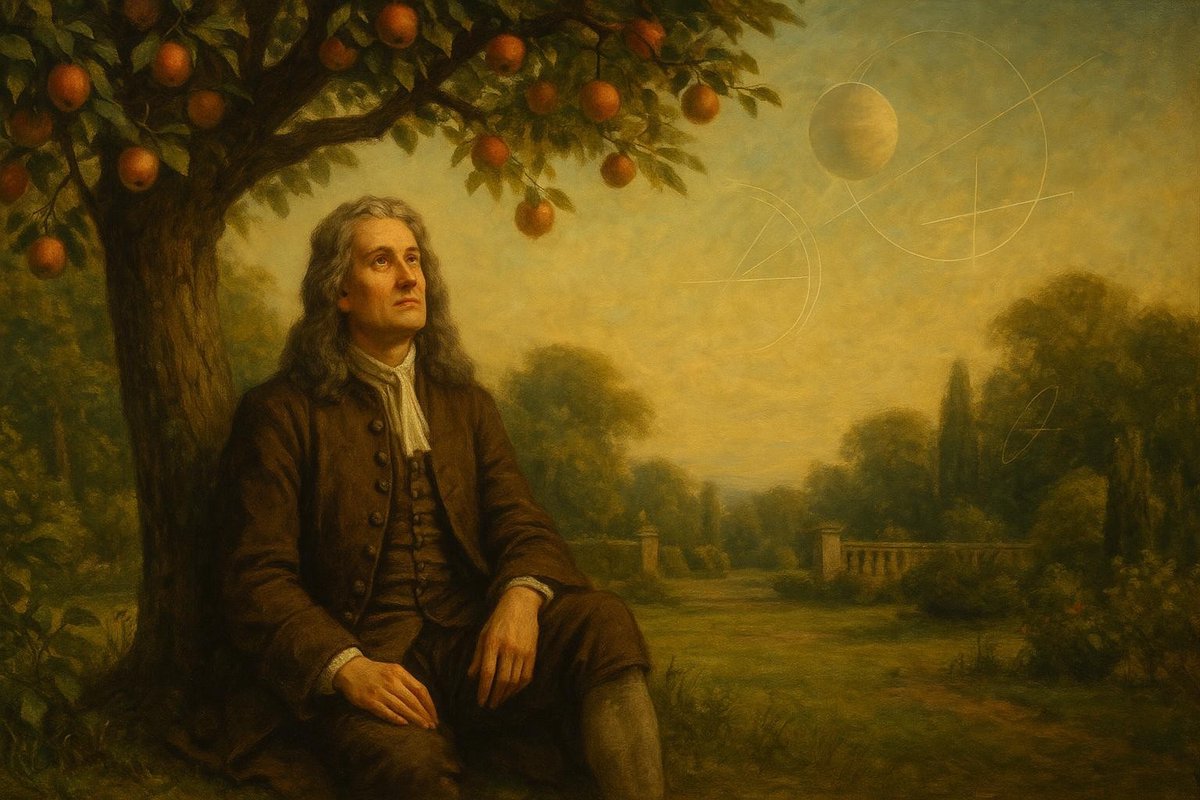
Unpacking the Question: What Sparked Newton’s Curiosity?
Imagine a world where apples not only nourish us but also inspire groundbreaking scientific principles. That’s the tale of Isaac Newton and his monumental insight into gravity. The story begins with a simple question: Why did an apple fall from a tree, yet the moon remains steadfast in the sky? It’s a question that seems deceptively simple but opened a cosmos of inquiry.
Before Newton, the world had grappled with celestial movements using the theories of great minds like Aristotle and Ptolemy, who viewed the heavens as a realm of perfect, unchanging bodies. These ideas, while influential, couldn’t explain the complexities observed in the movements of planets and moons.
- Misconception: People once thought celestial bodies moved in perfect circles.
- Reality: Newton showed these paths could be elliptical.
In 1665, as the Great Plague swept through England, Newton retreated to his family’s home in Woolsthorpe, where he began pondering these questions. The societal turmoil of the time created an environment ripe for reflection and innovation. In this solitude, Newton connected the dots between the falling apple and the orbiting moon, setting the stage for his theory of universal gravitation.
Surprising Facts: Newton’s Revolutionary Observations
Many people believe Newton merely observed an apple falling, but there’s more depth to this moment of reflection. He considered the gravitational force as a universal phenomenon, which was a radical departure from previous thoughts. This simple observation led to his understanding that the same force pulling the apple also kept the moon in orbit.
Interestingly, Newton’s insights weren’t just about apples and moons. His calculations showed that any two objects attract with a force proportional to their masses and inversely proportional to the square of the distance between them.
- Thought Experiment: Imagine tying a rock to a string and swinging it. Let go, and the rock flies away. What if gravity held it in orbit, like the moon?
Newton’s friend, astronomer Edmond Halley, was so impressed by these revelations that he urged Newton to publish. Halley famously said, “There is no one among the mathematicians of Europe who desires it not.” In 1687, Newton published “Principia Mathematica,” cementing his theories and changing our understanding of the universe forever.
What Science Says: Bridging Earthly and Celestial Movements
Newton’s law of universal gravitation provided a unified explanation for celestial phenomena, bridging the gap between earthly and heavenly motions. The elegance of Newton’s equations demonstrated that the same principles governing a falling apple also applied to the planets and stars.
- Experimental Steps: Newton derived his law by observing planetary motion and using mathematical calculations.
This was groundbreaking because it was the first time a mathematical framework was applied to describe natural phenomena so comprehensively. Newton was building on the ideas of Kepler and Galileo, who had themselves challenged the Aristotelian worldview. His equations brought precision to the predictions of planetary orbits, fostering further scientific exploration and development.
His work laid the groundwork for future scientists like Einstein, who would expand on Newton’s theories. As Newton humbly noted, “If I have seen further, it is by standing on the shoulders of giants.” While his theories were not without debate or challenge, they provided a coherent system that was unmatched in its time.
What It Means for Us: Legacy and Impact on Modern Science
Newton’s laws of motion and universal gravitation are more than historical relics; they’re the foundation of much of modern science and engineering, from launching rockets to understanding tides. They remain relevant, teaching us about the forces shaping our world and beyond.
His work exemplifies the power of curiosity, showing how a simple question can unravel the mysteries of the universe. Newton not only explained celestial movements but also inspired generations to explore the unknown.
- Analogy: Gravity is like a cosmic dance partner, keeping everything in motion, yet in balance.
Today, Newton is remembered not just for his scientific contributions but for his relentless curiosity and willingness to question the status quo. His insights remind us that the world is full of wonders waiting to be discovered, inviting us to look up and ponder.
Fuel Someone Else’s Curiosity: Share this story of discovery and inspiration with others. Who knows what new ideas might be sparked when we question the world around us?
In reflecting on Newton’s journey, we’re reminded of the importance of curiosity and persistence. His story is a testament to the profound impact of asking, “Why?” Let’s continue to encourage this spirit in ourselves and those around us, as we never know where it might lead.

Leave a Reply